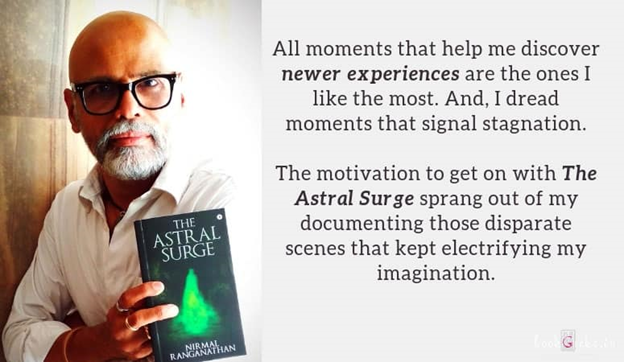Interview With R. Seshasayee, Author of "The Dance Of Faith"
on Oct 06, 2022
 (1).jpg)
Seshasayee is a very well-respected senior business leader. He has held several leadership positions, including as executive vice chairman and managing director of Ashok Leyland Ltd, chairman, Infosys Ltd, chairman, IndusInd Bank Ltd, etc. He is presently vice chairman, of Hinduja Group, and independent director, of Asian Paints Ltd.
He was president of the Confederation of Indian Industry (CII), president of the Society of Indian Automobile Manufacturers ( SIAM), and has served on several committees of the Government of India, including the Board of Trade. He was also the co-chair of the World Economic Forum, Middle East.
Seshasayee is deeply committed to social causes and is the founder member of Korea University, chairman of Cancer Institute, Chennai, chairman of the executive committee of Hinduja National Hospital, Mumbai, and chairman of the Schizophrenia Research Foundation of India. He was a former chairman of the National Institute of Technology, Tiruchirappalli ( NITT), and other educational institutions.
He served as chairman, of the Board of Trustees of Srirangam temple. He has also received formal training in classical music and was, till recently, the vice president of the Music Academy, Chennai.
The Dance of Faith is his debut novel.
Frontlist: Zaheer's father referred to his choice of the shirt as a "girl's blouse." Why do you think toxic masculinity is so deeply engraved in society?
R. Seshasayee: To answer the question as to why there is ‘masculine toxicity, we’d need to go back a long way in history and even anthropology. That is not a productive process for a solution.
But it’s necessary first to acknowledge that there is pervasive male dominance even in contemporary society, that sometimes leads to masculine toxicity. Law cannot solve the problem. But writers, creative artists, and social activists should unhesitatingly call out toxicity and shame society into a whole series of micro-actions. But the change will take time, but one should remain hopeful because the last fifty years have erased substantially the blots of a few thousand years.
Frontlist: This story depicts how one religion's grip prevented a talented individual from pursuing his dreams. What role do you believe education should play in addressing this?
R. Seshasayee: In my novel, I haven’t depicted religion as ‘preventing’ the recognition of talent. I have put the searchlight on religion playing an obstructionist role in the pursuit of an art form that is needlessly bundled with another religion. Unbundling art, language, and even cuisine from religious bundles, I think will eventually make some impact in even building bridges between religions.
Frontlist: Zaheer's character is inspired by a person's real life, as you mentioned in the book. To what degree did you incorporate fiction in the story?
R. Seshasayee: The skeleton is real. Even the muscles are facts. I have fleshed it out with fiction, to give it a shape and form, to make it relatable.
Frontlist: From the story's beginning, only Anandhi encourages Zaheer to pursue his dream. After her husband's death, she stops speaking to Zaheer and sends him back to live with his father. What caused this sudden change of heart?
R. Seshasayee: If you read carefully, there is a hint of a tribal palmist predicting the death of her husband, if they had a son in two years. I wanted to depict the truth that Faith can poison even a motherly relationship like the one between Anandhi and Zaheer.
Frontlist: This book has touched upon various stereotypes that plague the world we live in. Still, nowadays, many eminent personalities are putting their foot forward in breaking such stereotypes and societal norms. What's your stance on this?
R. Seshasayee: I completely agree that the last few decades have shown enormous progress in breaking stereotypes. But, a fluid society where you could choose different identities effortlessly is still a long way off. Humanity as one is a goal that will require our shedding stereotyping. This perhaps will never be achieved. But we need to progress on that endless journey.
While the demolition of stereotypes is being led by a few enlightened individuals, there is a counter move to draw thicker lines of our identities, such as religion, art, or whatever. There will always be counterforces that have a vested interest in preserving stereotypes because that preserves extant power structures.



.jpg)






.jpg)

.jpg)
.jpg)
.jpg)
.jpg)
.jpg)










Sorry! No comment found for this post.